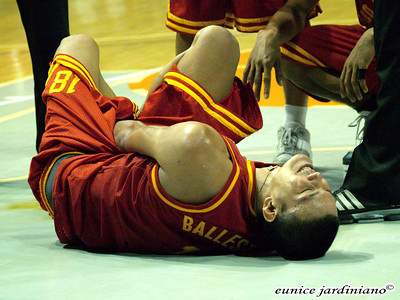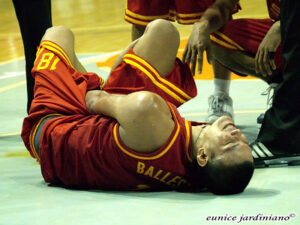Face and Head Injuries in Basketball

Basketball is a popular sport enjoyed by millions worldwide. However, as with any physical activity, there are inherent risks of injury, particularly to the face and head. While protective equipment can help minimize risks, the fast-paced nature of basketball means collisions are inevitable. Consequently, facial and head injuries are common in basketball. This article will examine some of the more frequent types of facial and head injuries seen in basketball and discuss prevention strategies.
One of the most frequent types of facial injuries in basketball involves the nose. Since the face is often the first body part to make contact during collisions, the nose is vulnerable. Basketball players commonly suffer from broken noses as a result of accidental elbows, falls, or blocked shots. Additionally, the forehead and cheeks are also at risk of lacerations or bruising from unintended impacts with other players’ arms, shoulders, or the basketball itself. Furthermore, due to close contact under the basket during rebounding or shooting opportunities, basketball players frequently collide heads as well.
Not only minor facial injuries like black eyes or cuts but also serious head injuries occasionally occur in basketball. Concussions, in particular, have become a growing concern in the sport. Concussions happen when a blow causes the head and brain to shake rapidly back and forth inside the skull. Symptoms can range from headaches to nausea to disorientation. Moreover, repeated concussions have been linked to long-term neurological issues like chronic traumatic encephalopathy. Therefore, head injuries require careful medical evaluation and management. Additionally, since symptoms may not always be evident immediately, it is essential players receive proper concussion education and report concerning signs promptly to medical staff.
To add, more catastrophic head and facial injuries can also arise from basketball. For example, fractures of the eye socket or skull base can potentially be life-threatening if not treated appropriately. Thankfully, such severe injuries are rare given modern safety protocols and medical advancements. However, they serve as an important reminder of why protective equipment and prompt medical attention are vital in any contact sport like basketball where high-speed collisions are an intrinsic aspect of play. Overall, facial and head trauma represent some of the most serious health threats participants face in basketball and deserve close attention.
In addition, protective equipment can go a long way in preventing or reducing the impact of facial and head injuries during basketball. For instance, mouthguards serve as the front line of defense for the teeth and lips. By absorbing impact through the jaw, mouthguards help spread forces and prevent serious dental trauma from direct blows. Similarly, facemasks provide a barrier that can deflect or soften collisions with elbows, basketballs, or the hard court surface before they reach vulnerable facial structures underneath. While neither mouthguards nor facemasks prevent all injury, studies have shown they mitigate the severity of many facial impacts that would otherwise result in broken bones, lacerations or concussions.
Furthermore, helmets represent another important piece of protective equipment for basketball, especially at younger age levels. While full-coverage helmets are not required nor practically feasible for all levels of competitive play due to risks of overheating and restricted vision, select youth leagues have started mandating helmets. This aims to offer additional protection during critical periods of childhood neurological development with the goals of lowering concussion incidence and mitigating any long-term complications. Preliminary evidence has found properly fitted helmets can reduce head impact severity and concussion occurrence rates by up to 50% in some youth sports. Of course, protective gear alone cannot eliminate all risks and injury prevention must involve additional strategies beyond equipment.
Moreover, coaching methods and rule enforcement play a critical role in lowering injury potential through basketball. Educating players on safe technique, calling controlled practices that discourage reckless movements, and strictly penalizing dangerous plays like elbows, can curb high-risk behaviors. Leagues should also constantly examine rules and undertake evidence-based revisions when needed to minimize unnecessary contact scenarios. For instance, the NBA introduced retaliation penalties and reforms to reduce non-basketball bodily contact like undercutting airborne shooters as such maneuvers frequently lead to falls and collisions. Similarly, FIBA implemented changes empowering referees to issue technical fouls for flagrant or excessively violent acts during games. By promoting discipline and sportsmanship on the court, rules actively cultivated a safer basketball culture over time.
In conclusion, face and head injuries unfortunately represent inherent risks in basketball due to the fast pace and physical nature of competitive play. However, prevention methods like protective equipment appropriately utilized, promoting safety-conscious coaching, and enforcing rules penalizing dangerous conduct can collectively lower injury frequencies. With continued progress evaluating equipment innovations, identifying injury patterns, and prioritizing player wellness, basketball authorities are better positioned now more than ever before to curb facial and neurological trauma. By focusing efforts on education, early detection, and evidence-based interventions, participation in basketball can remain enjoyable while minimizing long-term health consequences for all involved. Going forward, a united commitment to injury mitigation among athletes, coaches, officials and leagues can help ensure basketball’s legacy and popularity for generations to come without compromising participant well-being. With diligence, the rewards of basketball far outweigh any risks for both recreational players and professionals alike when safety remains the top priority.







